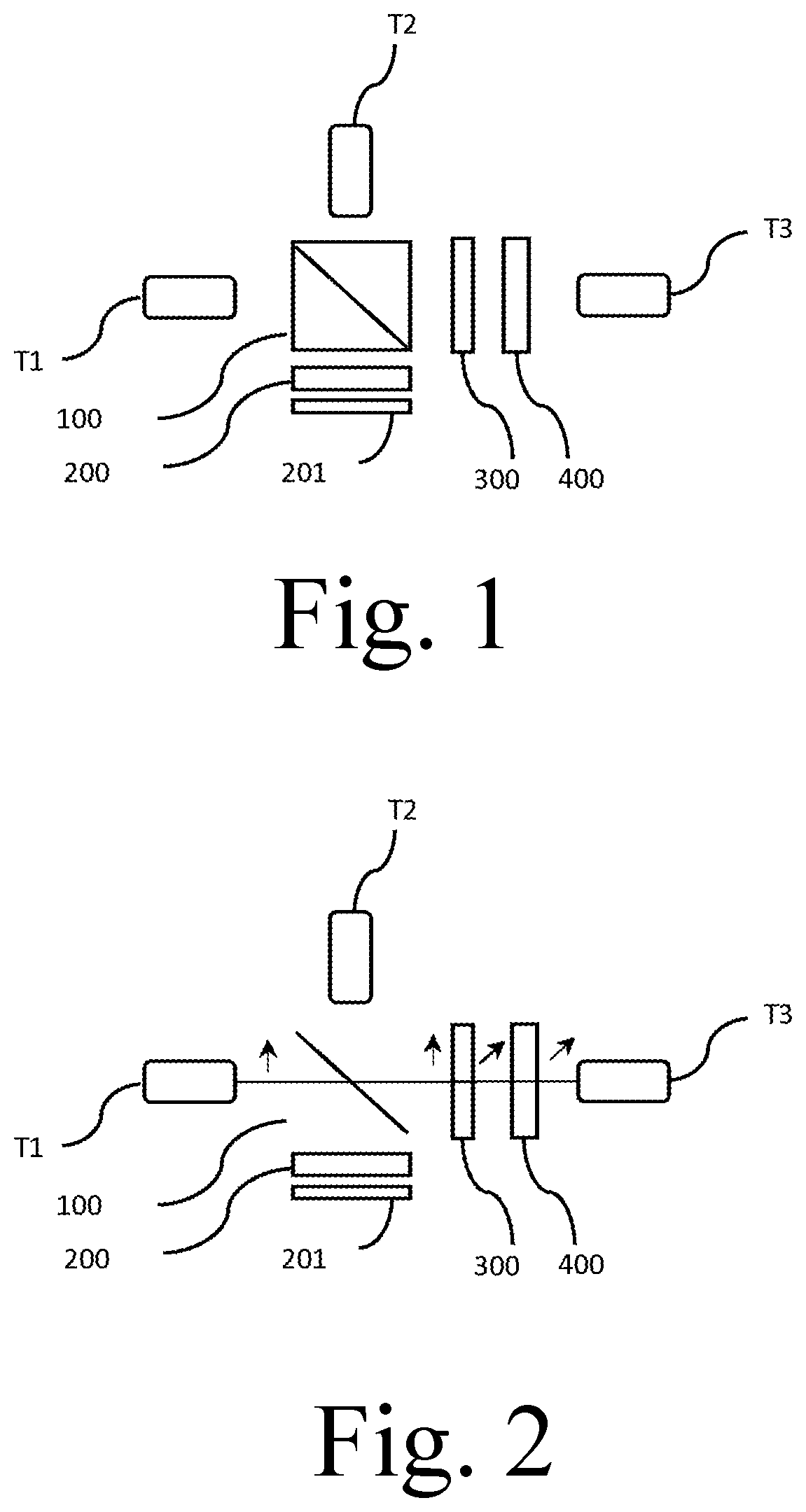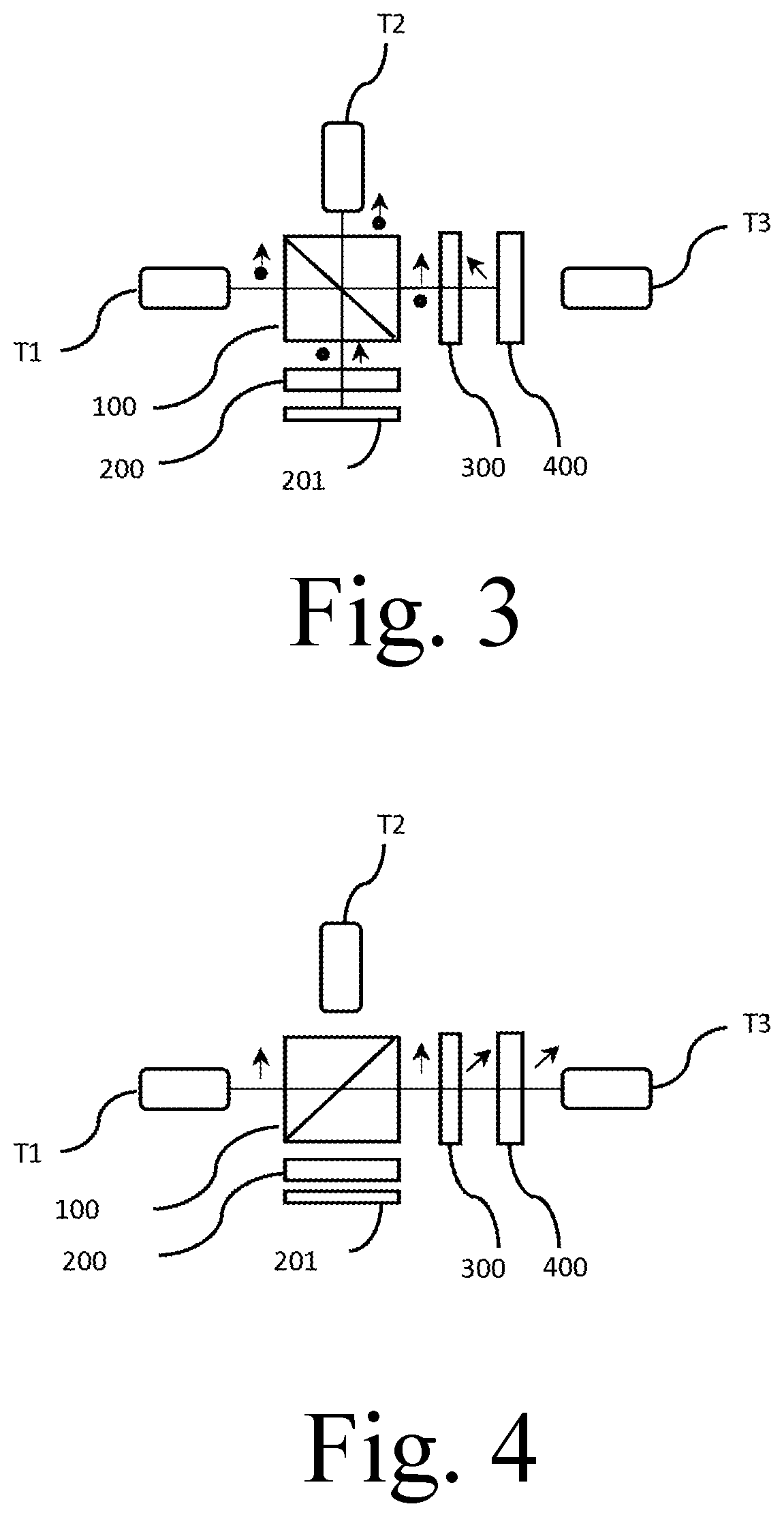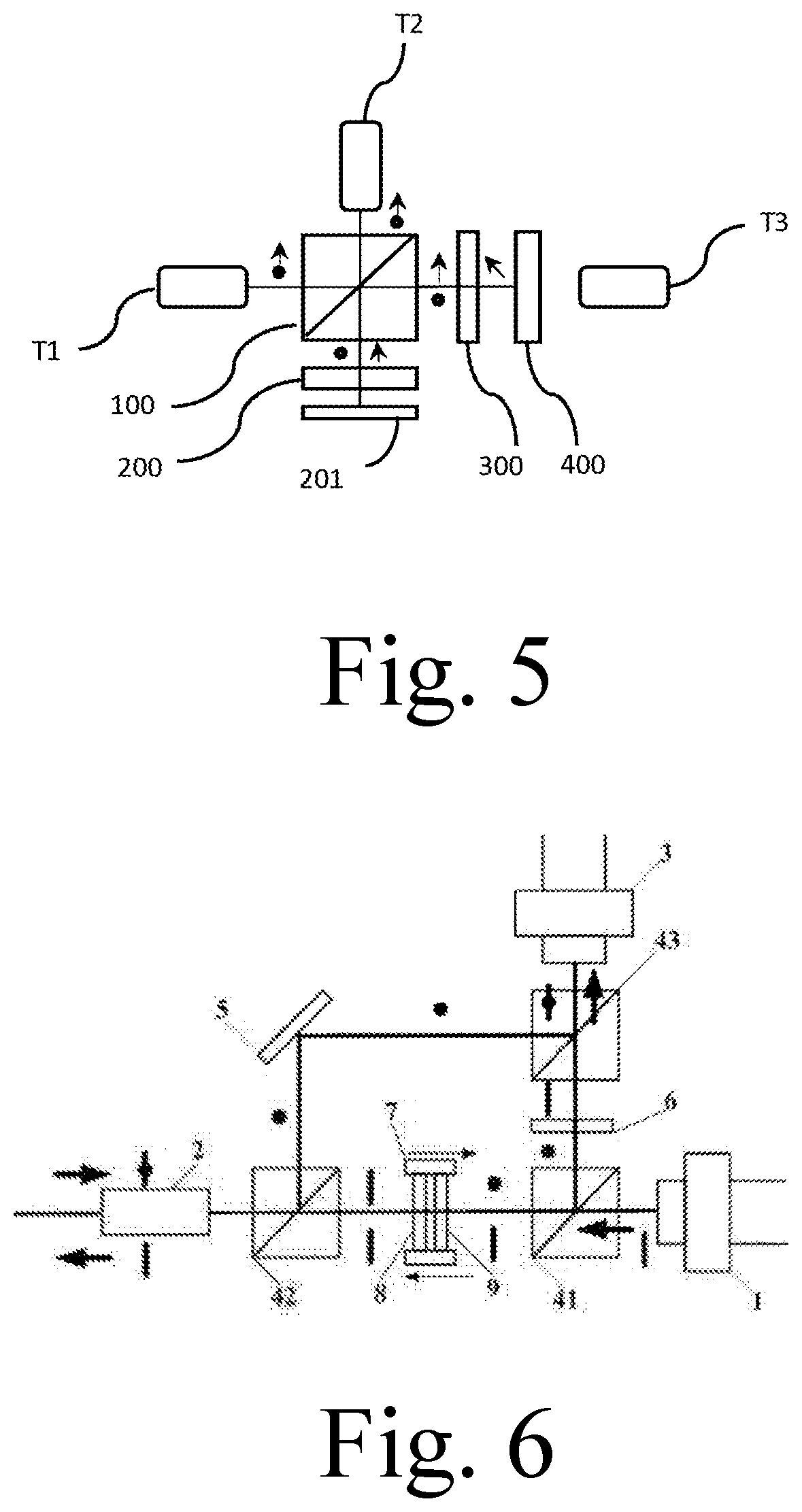Miniaturized optical circulator
a circulator and optical technology, applied in the field of optical fiber communication technology, can solve the problems of hindering the market application of the device, wasting a large amount of optical fiber resources, and very large loss of optical signals, and achieves the effects of small optical components, reduced volume of existing optical circulators, and low cos
- Summary
- Abstract
- Description
- Claims
- Application Information
AI Technical Summary
Benefits of technology
Problems solved by technology
Method used
Image
Examples
Embodiment Construction
[0028]In order to further understand the objects, structural features and functions of the present invention, the following detailed description will be made with reference to the accompanying drawings. It should be understood that the specific embodiments described in this section are merely illustrative of the invention and are not intended to limit the invention.
[0029]A miniaturized optical circulator of the present invention comprises: a common terminal, a receiving terminal, a transmitting terminal, and an optical component comprising a first polarized beam splitter, a reflective polarization controller, a 45-degree Faraday rotator and a second polarized beam splitter.
[0030]The function of the first polarized beam splitter is to separate the optical signal into a first polarization component and a second polarization component whose polarization directions are orthogonal to each other (without loss of generality, which can be assumed to be p-polarized light) and a second polari...
PUM
 Login to View More
Login to View More Abstract
Description
Claims
Application Information
 Login to View More
Login to View More - R&D
- Intellectual Property
- Life Sciences
- Materials
- Tech Scout
- Unparalleled Data Quality
- Higher Quality Content
- 60% Fewer Hallucinations
Browse by: Latest US Patents, China's latest patents, Technical Efficacy Thesaurus, Application Domain, Technology Topic, Popular Technical Reports.
© 2025 PatSnap. All rights reserved.Legal|Privacy policy|Modern Slavery Act Transparency Statement|Sitemap|About US| Contact US: help@patsnap.com



